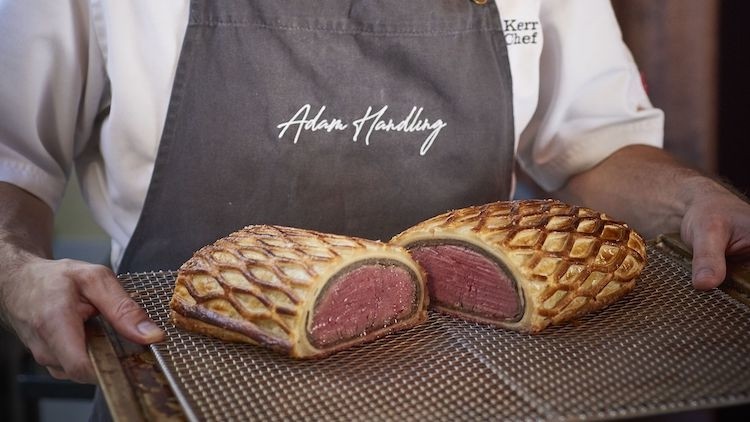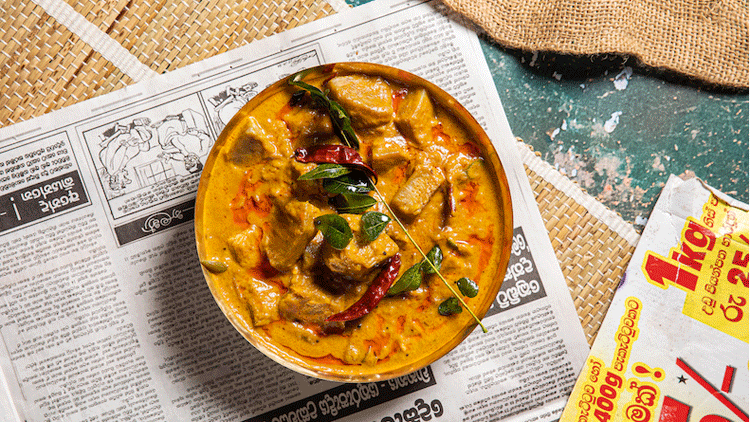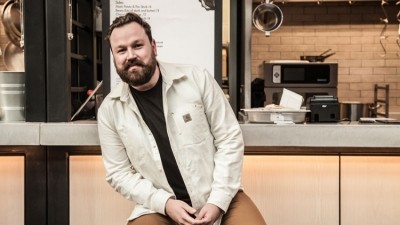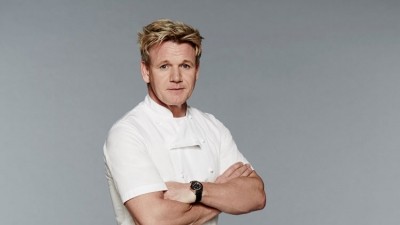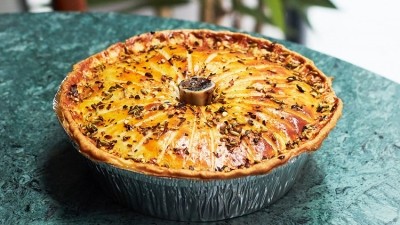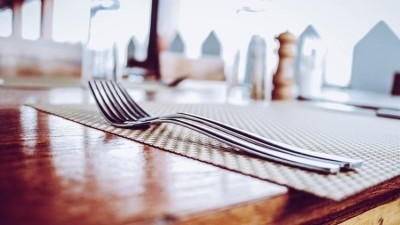Boxing days: what 2021 holds for the makeaway market
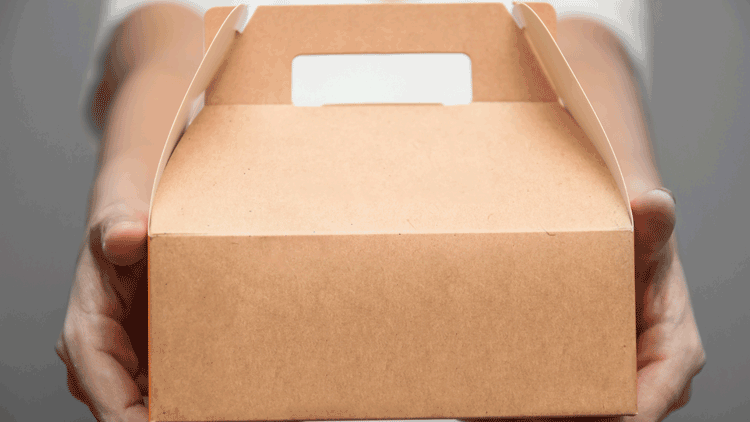
If, a few years back, you’d proposed to a restaurant business that it makes their dishes available for people to cook in their home kitchens you would have been met with incredulity and no doubt laughter: why would they choose to offer something that would take a lot of time and effort to achieve and, moreover, why would anyone feel the need to buy something they could get for a similar price in the comfort of a restaurant environment?
The ongoing pandemic, which has seen restaurants forced to close for long periods of time and look to new forms of income, has been the answer to both questions, creating both supply and demand. And while restaurant ‘makeaways’ - meal kits of ingredients where much of the prep has been done in advance - may have taken a lot of thought and effort by businesses to perfect, the speed at which many across the country have met the challenge has been nothing short of admirable.
A profitable pivot
Unsurprisingly, early adopters of the idea - most notably Pizza Pilgrims and Patty & Bun with their frying pan pizza and DIY burger kits respectively - came from the casual dining sector, offering customers the chance to recreate their iconic, if not particularly complicated to make dishes, at home. Yet as 2020 came to a close, restaurants from across the dining out spectrum, from small independents and established fine dining titans to large groups had got involved in what has proven to be a lifeline for many.
Like many of his peers, when Adam Handling launched his makeaway business Hame - named after the Scottish word for home - it was first and foremost an act of survival. “I didn’t do it because I wanted to grow the business, I did it because I wanted to stabilise it,” he recalls.
“We’d lost Hoxton [restaurant] and Ugly Butterfly [his eco-friendly restaurant]. If I didn’t have Hame I would have had to make loads of my team redundant. I’m looking at the bigger picture in terms of when I have a restaurant to reopen, I have a team ready to go and jump into it, that’s the whole idea behind starting Hame.”
“I didn’t do it because I wanted
to grow the business, I did it
because I wanted to stabilise it”
With Hame, Handling was one of the first of the fine dining restaurants to move into meal kits and despite a slow start the business has become hugely important. In the first week of launch Hame sold just 150 dishes, rising to 500 in the second week. However, the third week coincided with Father’s Day, with the business delivering more than 2,500 dishes. It now averages some 1,500 dishes a week.
Christmas was even more lucrative, with Hame receiving £50,000 worth of pre orders for Handling’s Christmas meal boxes, which sold at £250 upwards, spurring him to look for a new kitchen from which to produce more meal kits for this year.
Indeed, according to the restaurateur it was the most profitable part of the company last year helping it towards breaking even for the year. “Hame is the most profitable out of all our restaurants because it’s not paying rent, it uses the restaurants we already have therefore the profit margin on it is great.”
Handling typically makes a 20-24% margin on his meal packages although individual dishes “make no money”, he says. “They are sold at cost as added values to our menus. We treat Hame like a normal restaurant rather than everything having got a margin based on what it costs to make.”
Unlike many restaurant makeaways, which are sold only as multi-course meal kits, Hame has an a la carte offer of individual dishes to be as accessible as possible. “If someone wants three portions of chicken butter and cheese doughnuts that’s fine. If they want specialist ingredients I’ll source it and send it to them. It’s about making things easier for the customer.”
Another business that takes this approach is Elite Bistros with its Elite at Home range. The Gary Usher fronted business was slower to adopt the makeaway model than others, and while it doesn’t have the scale of some it has proven to be a vital source of income for the restaurant group.
In terms of numbers, Elite Bistros caps its orders at around 250 orders a week (although it did 400 of its Christmas boxes) to be able to meet demand although demand is likely to be much higher. “We were blown away by the demand for it,” says operations manager Gareth Jones. “We were very busy initially as, during the first lockdown, people were stuck at home and couldn’t go to restaurants. It’s something that we probably would never have done had it not been for the pandemic, but we’ve carried on with it since then and it’s become quite an important part of our business.”
Like Handling, Elite opted for an approach that better resembled what it did in the restaurant with an a la carte choice of different starters, mains, side orders and desserts, which Jones admits “is perhaps more challenging”.
The Elite team has discussed the potential for moving towards a weekly changing menu to keep things interesting but has so far stuck to its original approach. “There’s advantages and disadvantages to both. We have some people who order very often and want the same thing every time because they like the feather blade for example, which is one of our dishes which people love.
“We’ll keep looking at it because you have to keep it fresh and interesting - changing up the menu, giving people different options. You have to give people a reason to order.”
All dishes are produced in the restaurant kitchens. With the changing tiers, restrictions and opening and closing of restaurants there’s been a little bit of moving around but most of the cook-at-home service comes out the group’s Burnt Truffle restaurant. “Logistically, that’s the site that works best in terms of producing, but some of the prep has been done at other sites too as we’ve been closed with a good team of chefs at our disposal,” says Jones.
Staying power
With a Coronavirus vaccine now being rolled out and forecasts that restaurants could reopen permanently by the spring and welcome back dine in customers, will makeaways be the proverbial flash in the pan or will they have more staying power?
One person who thinks it will certainly be the latter is Michelle McIntosh, founder of the about-to-launch restaurant meal kits business Restaurant Box. McIntosh says that she had the idea for the business a few years back but couldn’t find the right chef partners at the time, but that the pandemic has now brought its need to the fore.
In terms of the potential for makeaways beyond the end of the pandemic she points to the success of meal ingredient delivery businesses such as Gousto and HelloFresh, whose offering she describe “an edited supermarket basket”. “There isn’t any particular provenance of the ingredients; they are targeted at the person one level of ambition above a frozen supermarket meal. They exist only to pre-portion supermarket ingredients into a box and have a really hard to sell to the customer, and yet pre Covid the market was worth £248m across a very small handful of brands.
“What that tells me is that the customer at home is looking for a curated food experience, tuition around how to cook, for inspiration, for more engagement with their food. If you could stick a really strong magnet in front of that proposition you will surely end up in the stratosphere – to me that connection is restaurants and chefs.”
With investment from Innovate UK as part of the Government’s support for UK businesses driving innovation and development during the COVID-19 pandemic and with backing from TopTable founder Karen Hanton as lead investor and chair, Restaurant Box is a serious proposition. Already on its books are restaurants such as Cafe Murano, Chotto Matte, Ormer Mayfair, Jose Pizarro and Cafe Spice Namaste as well as Haar, the restaurant founded by 2018 MasterChef semi-finalist Dean Banks.
McIntosh says that a lot of restaurants that were quick to market during the first lockdown with their meal kits naturally stopped their offer when their restaurants opened, wrongly concluding there is no demand for boxes when not in lockdown. Although customers who live close to the restaurant might decide to go there in person once it has reopened, she says the ending of lockdown just means that it the majority of future business will come from further afield.
“The at-home lifestyle will endure,” she predicts. “The key office days will be Monday to Wednesday with commuters back in the home counties for the peak dining occasions and will still want meal kits at home.”
Handling’s figures for Hame suggest that even once his restaurants reopen permanently there will still be demand from people who can’t get to the capital. According to his data only 10% of Hame customers have been to his restaurants with 90% new or returning Hame customers. “We have reached another market we would never have been able to,” he says.
Handling does expect a downturn in Hame custom post lockdown but has no intention of stopping the business once this happens. “The business plan is not to turn it off but to modify it slightly when demand becomes less, which it will do when businesses reopen.”
Instead he hopes to turn Hame into a development platform where all the new dishes for his restaurants will be first tested out. “This is giving customers an opportunity to give us feedback and to help rewrite the next menus. It gets people involved and valued. They taste it and the next time they come to London they can see how we cook it.
“Doing stuff like that means you have long-term customers. They connect with the restaurant and you then have them for life.”
Karan Gokani, director at three-strong Sri Lanan restaurant group Hoppers, also believes meal kits are here to stay. The company launched its brilliantly named Cash & Kari in October last year providing meal kits such as its lamb kothu roti meal and ultimate Hoppers meal as well as a range of Sri lankan spices, snacks, beers and cocktails.
“It is definitely a long-term project,” says Gokani. “We could have easily launched mid way through first lockdown but instead we took our time and did it probably. We wanted to learn from people’s mistakes because it’s a long-term thing.”
Elite’s Jones shares this view. “In terms of the future, it’s very much something we see as part of the business now,” he says.“As long as there is demand for it, we’ll continue to work with it because we think it’s a really good product that people seem to want and enjoy.
“People being able to enjoy restaurants in their home rather than going out will fit in well with people who aren’t going into the office and are working from home now. They might have gone for dinner after work in the city restaurants, they might now just want something that’s been delivered to finish off easily at home as well. I definitely think there’s a market for it. How big the market is, I don’t know?”
A growing marketplace
Another sign that the makeaway market is sticking around post pandemic is the number of platforms now offering meal kits, including Restaurant Kits, Slerp, and Restokit.
“The concept is here to stay,” says Xavi Molet, founder of Restokit, which counts restaurants including Brigadiers, Bentley’s, Kolamba, Lima and Shoryu among its partners and which is soon to add its first restaurants outside of London to the platform.
While its partners are London based, Molet says that 80% of orders come from outside of London, demonstrating how these platforms are enabling restaurants to extend their reach well beyond their traditional market. He says the success of some of the kits have even spurred restaurants to look for kitchen opportunities to operate the meal kits operation from a separate space.
There is potential beyond the UK, too. Molet’s next target is Paris, where he says that the idea of meal kits is still relatively unheard of for many Parisian restaurants despite them also having had to close for lockdowns.
“In terms of the future, it’s very much
something we see as part
of the business now”
Andy Waugh, co-founder of Restaurant Kits, also sees a future in the market and has adjusted his platform accordingly in order to better serve his customers’ needs both during lockdown and when things return to some sort of normality. Waugh, who is also co-founder of Scottish restaurant Mac & Wild, began Restaurant Kits as a Deliveroo-style platform where anyone in hospitality could list their kit, with him taking a commission from sales, but has since changed the model into something more manageable.
“Companies like Deliveroo and Just Eat control the courier system and being national we can’t do that, it would take too much money to set up. So instead we had to pair up with couriers like DPD and FedEx, but we couldn’t control the customer journey that way.”
Now, everything from ordering, stock control, food prep, packaging, logistics and customer service is done in house with Waugh switching Restaurant Kits to a subscription-based model. Waugh and his partners work with each brand on the initial building of the kits, send them a model of how they will produce it to be signed off before its launch.
Working with restaurants brands such as Biff’s, Rola Wala, Corazon, Kricket, Tom Griffiths’ Flank and Flesh & Buns, every month new meal kits will be available on the platform replacing the offer of the previous month. Waugh says he is currently speaking with to brands to be part of 2021 menu and is looking to work with around 20 to 30 brands, listing them for around six months plus months a year.
The idea behind this approach is to retain interest once lockdown is lifted and to ensure the platform continues to offer something new. “When we launch a kit there is a huge spike at first and then it starts to dip and plateau,” says Waugh. “But if a kit is only available for a short amount of time there is a bigger spike and it flattens at the peak. You are better off saying there is a finite time available, the change in menus really works.”
Some of the original Restaurant Kits partners
Meal kit platform evolution
For Waugh, 2021 at least is about restaurants continuing to diversify and flex their brand muscles, and this goes for the meal kit platforms as well. Already they are adding new functionality, such as personalised Valentine’s cards from Restokit as well as the option for customers to order chefs to come into to their homes to help prepare the meals.
This functionality beyond just delivering meal kits is at the heart of McIntosh’s plans with Restaurant Box, which is looking to introduce elements such as kitchen clubs and curry clubs for people who want to cook or dine together either virtually or in real life once the lockdown is over and which is looking to create a community of like-minded home chefs.
“You can either just buy your box or get involved in the Restaurant Box community,” she says, with the site enabling users to create home chef profiles where they provide information about their cooking style and can add badges of restaurant meal kits they have made to their profiles. “It’s a bit of gamification and bragging rights, it allows people to connect with other passionate home cooks.”
McIntosh is looking well beyond the end of the pandemic, with much of Restaurant Box’s functionality built on face-to-face experiences that just happen to be in the home rather than in a restaurant. Bill splitting is another such function with a customer able to book a meal kit for a group of people to host a dinner party with those people invited being directed to the site where they can confirm their attendance and pay.
“Someone might be happy to have everyone over to cook but not able to stump up £50 each,” she says. “They can send an invitation telling people what they are having and when they accept they pay or if they decline they then drop off the invitation.
“When lockdown lifts the nation will divide into hawks and doves. The hawks are the 20-somethings that will need to be out with their tribe at the first opportunity; the doves will be doing more home-based entertaining.”
While lockdown continues the company is looking a novel ways to target customers, such as meal kits for Valentine’s day when people can’t be together because of restrictions. Instead, companies can send a box to each person containing one half of a meal which they can enjoy over a Zoom call.
Like Molet, McIntosh sees the potential for her business beyond these shores and believes that with the help of businesses such as her's restaurants will be able to expand into new territories they previously wouldn’t have dreamt of.
“We see it going international. Restaurants at the moment are breaking themselves open about to filling their 100-200 seat restaurant, but they are fighting the wrong war. In the UK there’s 28 million households, if you can reach them and connect with them your dine-in business is microscopic compared with the potential for kits.
“In the past, to take a restaurant internationally you had to be a Gordon Ramsay or a Gary Rhodes, have a big investor and physically take a bricks and mortar site. The great thing about Restaurant Box as a concept is that you can generate your concept from anywhere. Angela Hartnett could be running a New York Restaurant Box from London with all the fulfillment done locally.
"You don’t need an investor you just start grafting yourself. It’s incredible what can be achieved.”
